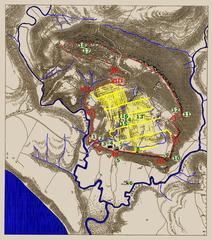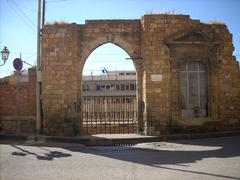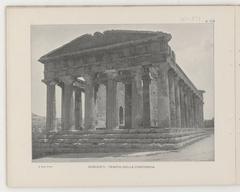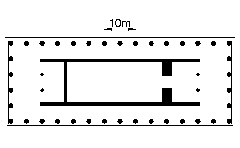
Agrigento Cathedral Visiting Hours, Tickets, and Historical Sites Guide
Date: 04/07/2025
Introduction
Perched atop the historic heart of Agrigento, Sicily, the Agrigento Cathedral—officially the Cattedrale Metropolitana di San Gerlando—stands as a powerful symbol of the city’s rich cultural and religious legacy. Founded in the late 11th century during the Norman conquest, the cathedral has witnessed centuries of transformation, blending Norman, Gothic, Baroque, and Arab influences into a unique architectural masterpiece. As both a place of worship and a cultural landmark, the cathedral offers visitors striking interiors, remarkable artistic treasures, and commanding views over the Mediterranean and the Valle dei Templi. This comprehensive guide delivers essential information about visiting hours, ticketing, accessibility, guided tours, and practical travel tips, as well as an in-depth look at the cathedral’s history and significance. Whether you are passionate about history, architecture, or simply seeking to experience Agrigento’s vibrant heritage, this guide will help you make the most of your visit. For further resources, see SpottingHistory, Sicily.co.uk, and LifePart2AndBeyond.
Contents
- Introduction
- Foundation and Early History
- Architectural Evolution
- Religious and Cultural Significance
- Notable Events and Historical Milestones
- Visitor Information
- Frequently Asked Questions (FAQ)
- Conclusion
- Sources
Foundation and Early History
The story of Agrigento Cathedral begins in the late 11th century, in the aftermath of the Norman conquest of Sicily. Commissioned by Bishop Gerlando, who was appointed by Count Roger I, the cathedral was consecrated in 1099, marking the restoration of the bishopric after a long period of decline under Arab rule (Wikipedia; SpottingHistory). Its hilltop location was both strategic and symbolic, establishing Christian dominance over the city’s earlier Greek and Arab past and dedicating the structure to San Gerlando, Agrigento’s patron saint (ItaloAmericano).
Architectural Evolution
Norman and Gothic Foundations
The original church was built in the robust Norman style, with strong stonework and a Latin cross layout. In the 14th century, Gothic elements such as pointed arches and mullioned windows were added, which are still visible today (SpottingHistory).
Arab, Catalan, and Baroque Influences
Over the centuries, the cathedral absorbed influences from various cultures. Arab decorative motifs and Gothic-Catalan styles are evident, particularly in the unfinished 15th-century bell tower with its blind mullioned windows. Baroque renovations in the 17th century expanded and embellished the cathedral, introducing ornate chapels, frescoes, and a richly decorated altar (ItaloAmericano; Wonders of Sicily).
The wooden ceilings, some dating to the 16th century, now reside in the Museo Diocesano di Agrigento. Despite these layers of change, the cathedral retains a harmonious blend of styles, reflecting the island’s multicultural history.
Religious and Cultural Significance
Ecclesiastical Role
Agrigento Cathedral has long served as the spiritual and ecclesiastical heart of the city, functioning as the bishopric seat since its consecration and as the archdiocese seat since 2000 (Wikipedia). It is central to the city’s religious life and major celebrations.
Patron Saint and Traditions
San Gerlando’s relics are venerated within the cathedral, and his feast is celebrated annually with processions and special liturgies. The cathedral is also home to a fascinating acoustic phenomenon—whispers at the entrance can be heard clearly at the apse (ItaloAmericano).
Artistic Treasures
The cathedral’s treasury includes the Roman Sarcophagus of Phaedra (housed nearby in the Church of San Nicola), medieval sculptures, and 14th-century wooden statues (SpottingHistory; Wonders of Sicily).
Notable Events and Historical Milestones
Medieval to Modern Periods
Agrigento Cathedral has witnessed the city’s transformation from Greek Akragas to Roman municipium, Arab Girgenti, and Norman stronghold (ItalyGuides). Major renovations in the 16th and 17th centuries reflected Agrigento’s prosperity. The adjacent Episcopal Seminary, founded in 1574, made the area a center of ecclesiastical learning (SpottingHistory).
Preservation and Cultural Role
In the 19th and 20th centuries, preservation efforts protected the cathedral as the city modernized. Today, it is a protected monument and a major site for cultural events—especially as Agrigento marks its status as Italy’s Capital of Culture for 2025 (ItaloAmericano; ISSIMO).
Visitor Information
Visiting Hours
- April to November 3: Daily, 9:30 AM – 7:00 PM
- December 3 to March: Tuesday to Sunday, 10:00 AM – 1:00 PM
- Closed: During Mass, weddings, and funerals (YouOnTour; Stories by Soumya)
Check the official website for updates.
Tickets
- All-in Ticket: €7 (Cathedral, MUDIA Diocesan Museum, Towers, Sarcophagi Hall, Church of Santa Maria dei Greci)
- Reduced Ticket: €5 (ages 18–25)
- Free Entry: Under 18s, group guides, disabled visitors, Diocese residents, ecclesiastics, journalists, ICOM members, MVG pilgrims (with ID)
- Single Ticket (Cathedral only): €5
Tickets are available on-site. For groups or special arrangements, call +39 327 754 9152 (YouOnTour).
Accessibility
The main nave is wheelchair accessible via ramps. The bell tower and crypt require stairs and are not suitable for all mobility levels. Digital tools, including touchscreens and virtual reality, enhance access for all visitors (YouOnTour).
Guided Tours
Daily guided tours are available and offer historical, artistic, and cultural insights. Booking is recommended during peak seasons. Group tours can be arranged via the official contact (YouOnTour).
Photography
Photography is allowed (without flash or tripod), except during services and special events.
Facilities
Restrooms are available. Cafés and restaurants in the old town are nearby (Nomads Travel Guide).
Highlights and Unique Features
- Nave and Artistic Details: The nave features Gothic-Chiaramontano columns, a medieval painted wooden ceiling, and Baroque embellishments (The World of Sicily).
- Treasury and Sarcophagi Hall: Important relics and the 3rd-century Agrigento Sarcophagus are on display (Stories by Soumya).
- Bell Tower and Rooftop: Panoramic views of Agrigento and the Valley of the Temples (Bucketlistly).
- Crypt and Chapels: Reveal the cathedral’s layered history and blend medieval austerity with Baroque artistry (The World of Sicily).
- Digital Enhancements: AI-powered totems and virtual reality experiences provide multilingual, barrier-free access (YouOnTour).
- Legends: The “Letter of the Devil,” a mysterious 17th-century document, is housed in the bell tower (The World of Sicily).
Special Events & Cultural Programming
The cathedral plays a central role during Agrigento’s tenure as Italy’s Capital of Culture in 2025, hosting concerts, festivals, and religious celebrations such as the Feast of San Calogero and the annual procession of St. Gerlando’s urn (Great Sicily; The World of Sicily).
Practical Tips
- Dress Code: Modest attire is required (shoulders and knees covered).
- Timing: Early morning or late afternoon visits are ideal for avoiding crowds and enjoying the best light.
- Suggested Itinerary: Allow at least 1–1.5 hours to visit the nave, treasury, crypt, and bell tower.
- Nearby Attractions: Combine your visit with the Valley of the Temples, Church of San Nicola, Via Atenea, and the MUDIA Diocesan Museum.
Frequently Asked Questions (FAQ)
Q: What are the cathedral’s visiting hours?
A: April–Nov 3: Daily 9:30 AM–7:00 PM; Dec 3–Mar: Tue–Sun, 10:00 AM–1:00 PM; closed during services.
Q: What do tickets cost?
A: All-in ticket €7; cathedral only €5; reductions and free entry for eligible groups.
Q: Is the cathedral accessible?
A: The main nave is accessible; bell tower and crypt require stairs. Digital aids enhance accessibility.
Q: Can I take photographs?
A: Yes, without flash or tripod, except during services.
Q: Are guided tours available?
A: Yes, daily; group tours by arrangement at +39 327 754 9152.
Conclusion
Agrigento Cathedral is a living testament to Sicily’s layered history, spiritual tradition, and artistic achievement. With its harmonious blend of architectural styles, panoramic views, and vibrant community role, the cathedral is a highlight of any visit to Agrigento. Plan ahead using the latest information on visiting hours and ticketing, and consider combining your tour with other nearby historical sites for a truly immersive Sicilian experience.
For ongoing updates, guided tours, and exclusive content, download the Audiala app and follow us on social media. Discover more about Agrigento’s treasures and make your journey unforgettable.
Sources
- Agrigento Cathedral – Wikipedia
- SpottingHistory: Agrigento Cathedral
- ItaloAmericano: Agrigento Culture Capital 2025
- Wonders of Sicily: Agrigento Cathedral
- Travel to Italy Guide: Historic Center of Agrigento
- LifePart2AndBeyond: Agrigento and Valley of Temples
- ItalyTravelSecrets: Cathedrals in Italy
- GoTravelDaily: Top Activities Sicily 2025
- YouOnTour: Cathedral of San Gerlando
- The World of Sicily: Agrigento Cathedral
- Stories by Soumya: Agrigento Things to Do
- Nomads Travel Guide: Agrigento
- ISSIMO: Travel Guide to Agrigento






